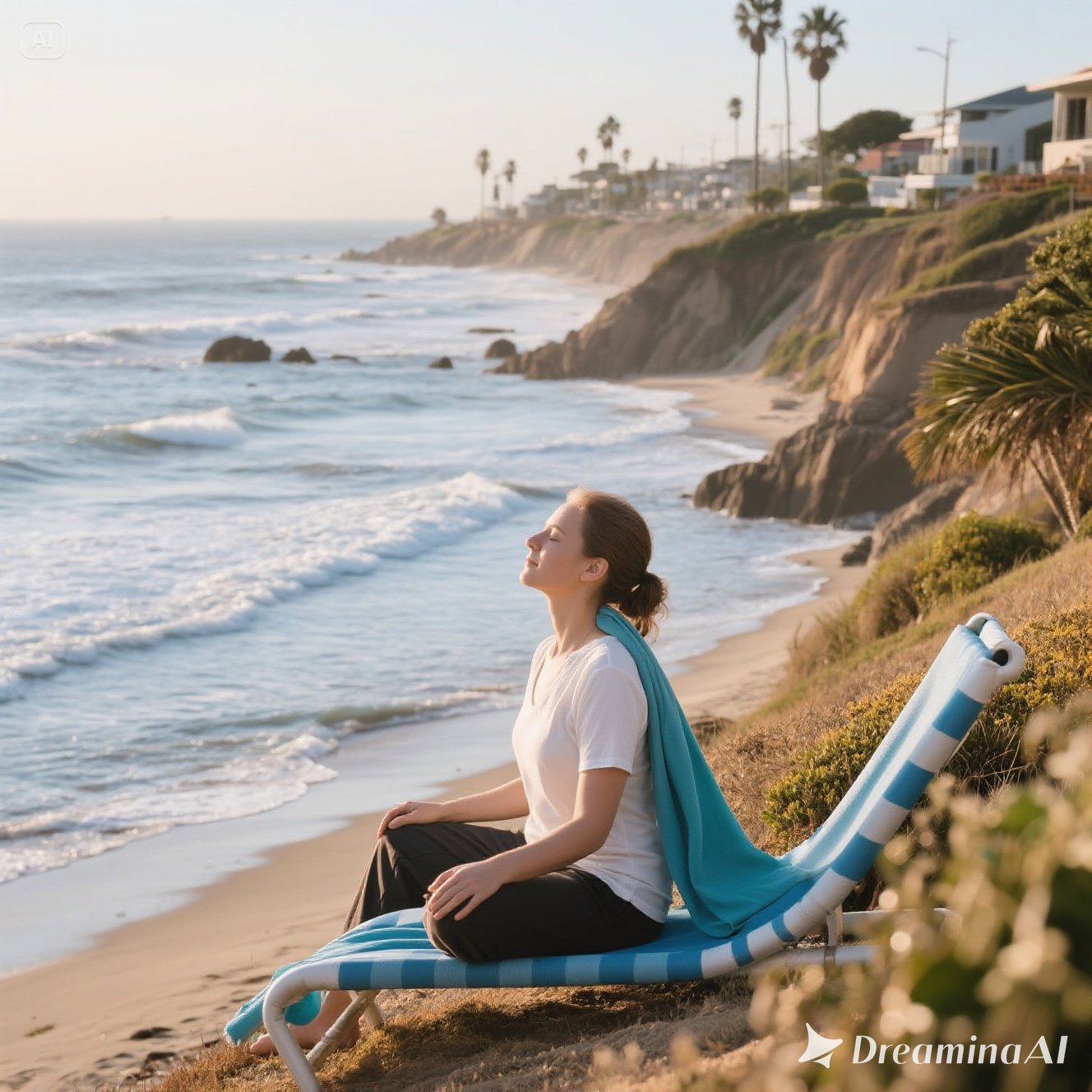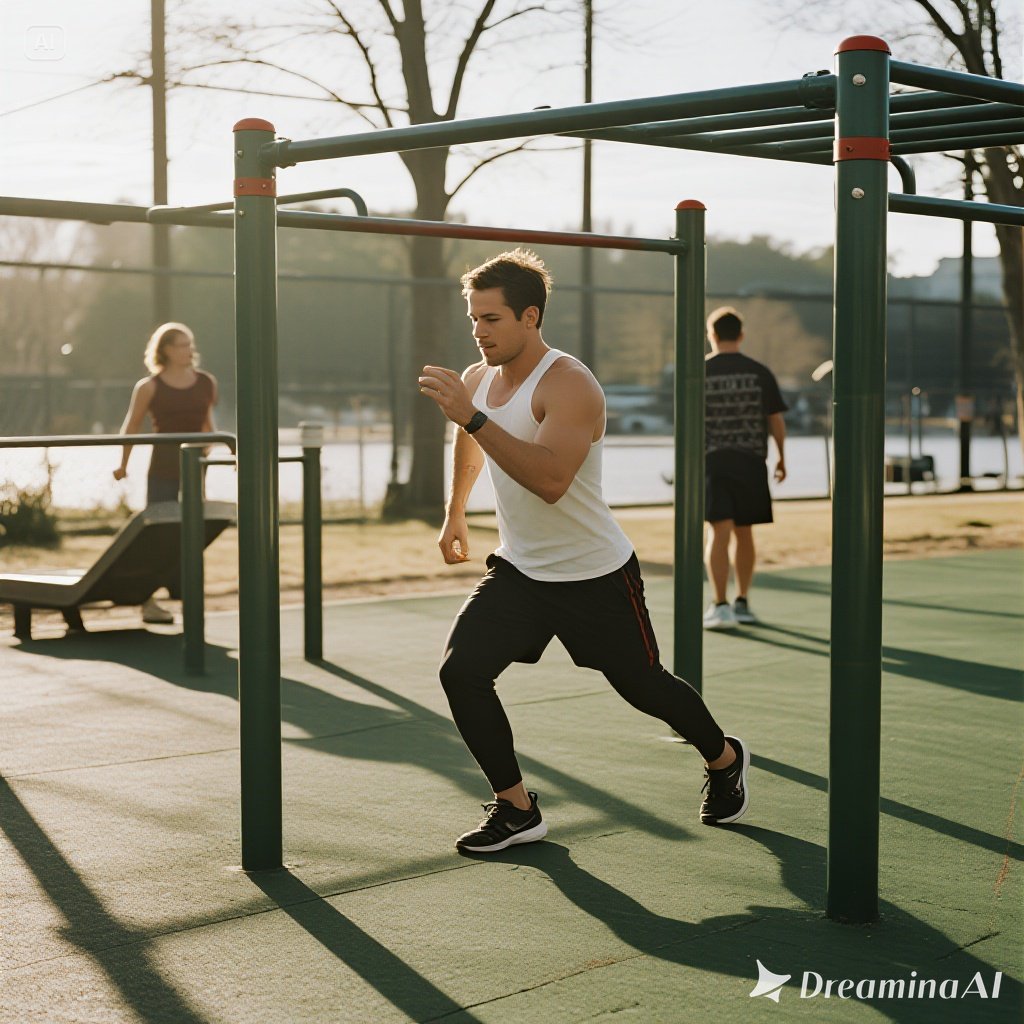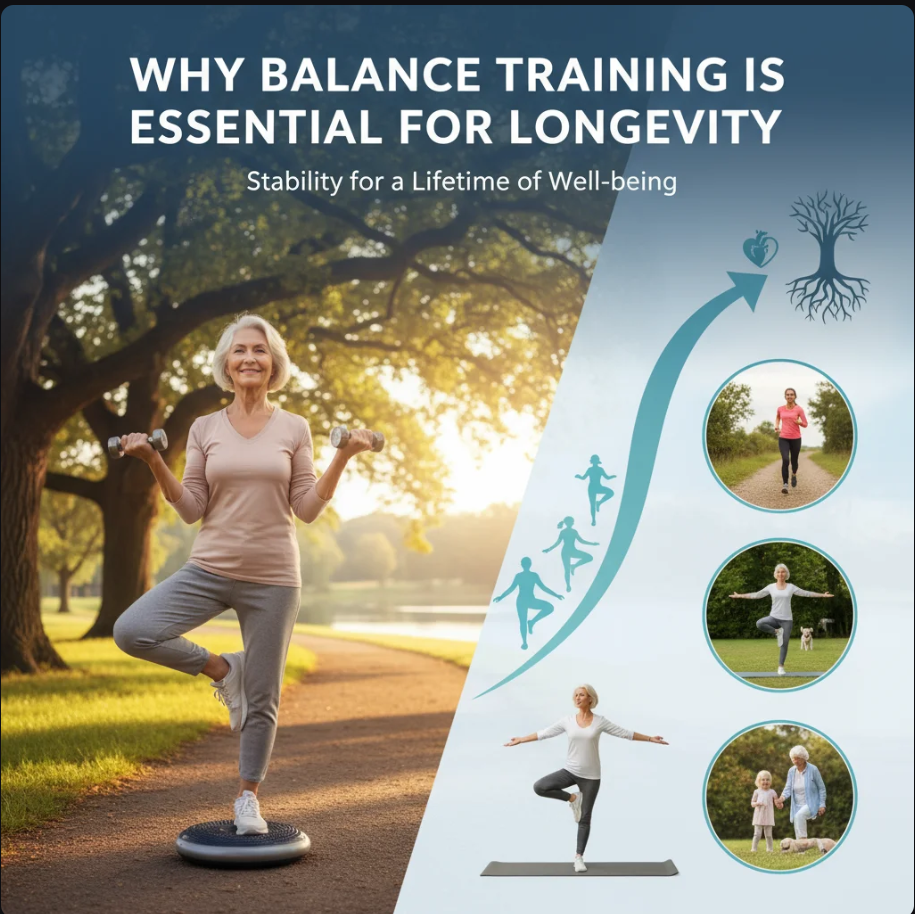Discover why balance training is essential for longevity. Learn how improving stability, coordination, and core strength can enhance health and lifespan.
When we think about fitness and longevity, we often focus on strength, cardio, and flexibility.
But one crucial component of lifelong health is often overlooked — balance training.
Balance is more than just the ability to stand on one leg; it is the foundation of mobility, stability, and injury prevention throughout life.
From athletes to older adults, developing balance means improving how the body communicates, reacts, and adapts to physical challenges — key elements for a long, active, and independent life.
This article explores why balance training is essential for longevity and how integrating it into daily routines can redefine the way we age.
1. Understanding Balance as a Core Fitness Component
Balance refers to the body’s ability to maintain control and stability during movement or while stationary.
It relies on three systems working together:
- Visual system: Provides information about body position in space.
- Vestibular system: Located in the inner ear, it senses motion and head position.
- Proprioceptive system: Uses sensors in muscles and joints to track body movement.
When these systems function harmoniously, the body achieves optimal control. However, as we age, these systems naturally decline — making balance training an essential practice to maintain coordination and prevent falls.
2. The Science of Balance and Longevity
Multiple studies show a strong link between balance capability and life expectancy.
A 2022 study published in the British Journal of Sports Medicine found that adults unable to stand on one leg for at least 10 seconds had nearly double the risk of mortality within the following decade compared to those who could.
Why? Because poor balance often signals underlying issues — such as declining muscle strength, slower reflexes, and impaired neurological coordination — all of which correlate with accelerated biological aging.
Balance training strengthens these core systems, promoting not just better mobility but also better brain-body communication, which is directly tied to longevity.
3. The Hidden Benefits of Balance Training
Beyond stability, balance training influences nearly every aspect of physical health.
a. Improved Coordination and Reflexes
Practicing balance helps the nervous system respond faster to changes in position, reducing the risk of falls and accidents.
b. Joint Health and Posture
Balance exercises engage stabilizing muscles around joints, particularly in the ankles, knees, and hips. This improves posture and reduces chronic strain on the spine.
c. Core Strength and Functional Movement
Balance-based workouts like yoga, Pilates, or single-leg training build deep core muscles — enhancing every movement, from walking to lifting.
d. Brain Function and Focus
Studies suggest balance training improves cognitive performance by stimulating neural pathways responsible for attention and coordination.
In older adults, this may help preserve memory and focus, slowing cognitive decline.
4. Balance Training Through the Ages
a. For Young Adults
Early integration of balance training improves athletic performance and prevents injuries in sports or fitness routines.
Exercises like single-leg squats or stability ball work enhance coordination and agility.
b. For Middle Age
As metabolism and muscle recovery slow, balance training helps maintain posture and movement control — counteracting the effects of sedentary lifestyles.
Incorporating dynamic movements, like tai chi or functional resistance exercises, strengthens stabilizing muscles.
c. For Older Adults
Balance training becomes a lifeline for independence.
Regular practice can reduce the risk of falls — one of the leading causes of injury and mortality among seniors — while maintaining confidence in daily movement.
5. Simple Ways to Incorporate Balance Training into Daily Life
You don’t need specialized equipment to start improving your balance.
Here are practical ways to build stability into your daily routine:
- Stand on one foot while brushing your teeth or waiting in line.
- Walk heel-to-toe along a straight line for 30 seconds daily.
- Use a balance cushion or wobble board during work breaks.
- Try yoga or tai chi to combine balance, flexibility, and mindfulness.
- Include unilateral exercises (like single-leg deadlifts or lunges) in your workouts.
Consistency is more important than intensity — small daily efforts lead to lasting improvement.
6. Balance Training as a Gateway to Mind-Body Wellness
Beyond physical benefits, balance training cultivates mental resilience and mindfulness.
The focus required to maintain equilibrium naturally trains the mind to stay present, reduce stress, and improve body awareness.
This synergy between mind and movement reflects a holistic approach to health — one that values not just how long we live, but how well we live.
Longevity is not measured solely by years, but by the quality, independence, and confidence we maintain through those years.
Conclusion
Balance training is not an optional part of fitness — it is a core pillar of longevity.
By improving coordination, preventing injury, and enhancing cognitive function, it supports both physical and mental vitality.
Whether you’re an athlete seeking performance or an individual focused on healthy aging, incorporating balance exercises into daily life is a simple yet powerful investment in your future.
In the pursuit of longevity, stability is not just a skill — it’s a philosophy.
Recommend :











